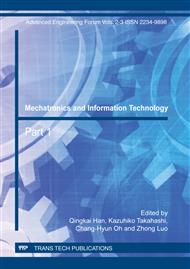p.219
p.223
p.228
p.234
p.239
p.243
p.249
p.253
p.257
Neural Measures Reveal Human Short-Term Working Memory–Varying Both Load and Cue Size
Abstract:
The objective of the study was to investigate neural processing during short-term visual working memory task under different memory load and cue size. Two or four items of the same sign but in different colors were presented on both sides of the screen, in which cues were applied as an indicator. Participants were cued to remember the colors of one side and then make a quickly response to the test sample. On the performance level, responses accuracy decreased with the increasing numbers of working memory loads. The response time increased with the increasing numbers of working memory load. The response time latency to the big cue was larger than that of the small cue. On the neural processing level, the high-load stimuli could arouse a more negative wave than the low-load stimuli.
Info:
Periodical:
Pages:
239-242
Citation:
Online since:
December 2011
Authors:
Keywords:
Permissions:
Share:
Citation:


